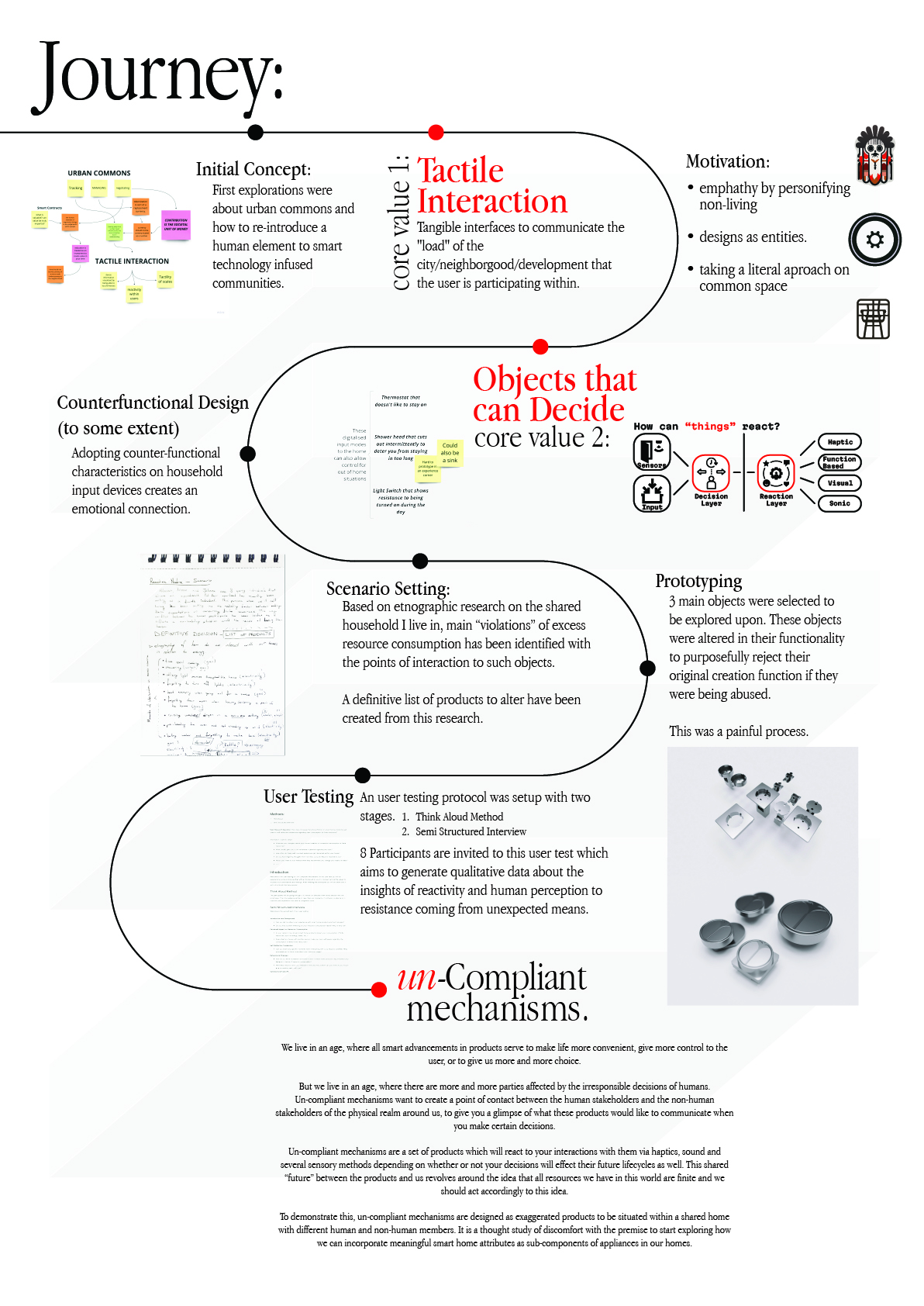
un-Compliant Mechanisms
un-Compliant Mechanisms
·
un-Compliant Mechanisms
·
un-Compliant Mechanisms
·
un-Compliant Mechanisms
·
un-Compliant Mechanisms
·
un-Compliant Mechanisms
·
un-Compliant Mechanisms
·
un-Compliant Mechanisms
·
un-Compliant Mechanisms
·
un-Compliant Mechanisms
·
un-Compliant Mechanisms
·
un-Compliant Mechanisms
·
un-Compliant Mechanisms
·
un-Compliant Mechanisms
·
un-Compliant Mechanisms
·
un-Compliant Mechanisms
·
un-Compliant Mechanisms
·
un-Compliant Mechanisms
·
Project Description
We live in an age, where all smart advancements in products serve to make life more convenient, give more control to the user, or to give us more and more choice. But we also live in an age, where there are more and more parties affected by the irresponsible decisions of humans. Un-compliant mechanisms want to create a point of contact between the human stakeholders and the non-human stakeholders of the physical realm around us, to give you a glimpse of what these products would like to communicate when you make certain decisions. Un-compliant mechanisms are a set of products which will react to your interactions with them via haptics, sound and several sensory methods depending on whether or not your decisions will affect their future lifecycles as well. This shared “future” between the products and us revolves around the idea that all resources we have in this world are finite and we should act accordingly to this idea.
We live in an age, where all smart advancements in products serve to make life more convenient, give more control to the user, or to give us more and more choice. But we also live in an age, where there are more and more parties affected by the irresponsible decisions of humans. Un-compliant mechanisms want to create a point of contact between the human stakeholders and the non-human stakeholders of the physical realm around us, to give you a glimpse of what these products would like to communicate when you make certain decisions. Un-compliant mechanisms are a set of products which will react to your interactions with them via haptics, sound and several sensory methods depending on whether or not your decisions will affect their future lifecycles as well. This shared “future” between the products and us revolves around the idea that all resources we have in this world are finite and we should act accordingly to this idea.



DOWNLOAD NOW:
Gallery
·
Gallery
·
Gallery
·
Gallery
·
Gallery
·
Gallery
·
Gallery
Gallery
·
Gallery
·
Gallery
·
Gallery
·
Gallery
·
Gallery
·
Gallery
Gallery
·
Gallery
·
Gallery
·
Gallery
·
Gallery
·
Gallery
·
Gallery







